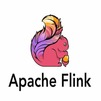
Dayforce training courses are designed to equip participants with comprehensive knowledge and skills to effectively use the Dayforce Human Capital Management (HCM) software. These courses cover a variety of topics including payroll management, workforce management, talent management, and benefits administration. Participants will learn how to navigate the software, implement best practices for human resources processes, and leverage Dayforce's powerful analytics and reporting tools to make data-driven decisions.
Dayforce Training Interview Questions Answers - For Intermediate
1. How does Dayforce handle time-off requests and approvals?
Dayforce allows employees to submit time-off requests through the self-service portal, which managers can then review and approve. The system automatically updates schedules and accrual balances accordingly.
2. What role does reporting play in Dayforce, and what types of reports can be generated?
Reporting in Dayforce helps organizations analyze data and make informed decisions. Types of reports include payroll reports, time and attendance reports, benefits reports, and HR analytics reports.
3. Can you explain the process of setting up and managing employee benefits in Dayforce?
Setting up employee benefits involves configuring benefit plans, eligibility rules, enrollment periods, and contribution rates in Dayforce. HR administrators then manage benefits enrollments, changes, and deductions through the system.
4. How does Dayforce handle compliance with Affordable Care Act (ACA) requirements?
Dayforce assists with ACA compliance by tracking employee hours and eligibility status, generating ACA-related reports, and facilitating IRS filing requirements, such as Form 1095-C.
5. How does Dayforce handle employee scheduling preferences and shift swapping?
Dayforce allows employees to set their scheduling preferences and request shift swaps with coworkers through the self-service portal. Managers can then review and approve these requests to ensure adequate staffing coverage.
6. What are some common integration points for Dayforce with other systems or software?
Dayforce integrates with various systems such as ERP software, time clock devices, benefits carriers, and recruiting platforms to exchange data seamlessly and streamline business processes.
7. How does Dayforce support performance management processes?
Dayforce enables organizations to define performance goals, conduct regular performance reviews, provide feedback and coaching, and track employee progress toward objectives.
8. What measures does Dayforce have in place to prevent data breaches and ensure data privacy?
Dayforce employs encryption, role-based access controls, audit trails, and regular security updates to protect sensitive data and ensure compliance with data privacy regulations.
9. What role does analytics play in Dayforce, and how can organizations leverage it for strategic decision-making?
Dayforce offers analytics tools to analyze HR and workforce data, such as turnover rates, labor costs, and performance metrics. Organizations can use these insights to identify trends, make data-driven decisions, and optimize workforce strategies.
10. How does Dayforce handle multi-country and multi-language support for global organizations?
Dayforce offers multi-country and multi-language support, allowing organizations to configure country-specific payroll and compliance requirements and provide localized user interfaces for global users.
11. What are some key considerations for data migration when transitioning to Dayforce from another HR system?
Key considerations may include data mapping, cleansing, and validation, ensuring data accuracy and integrity, and planning for downtime and data migration timelines.
12. How does Dayforce support employee training and development initiatives?
Dayforce provides tools for creating and delivering training content, tracking employee training progress and certifications, and identifying skill gaps and development opportunities.
13. How does Dayforce handle employee performance feedback and development plans?
Dayforce facilitates performance feedback through regular reviews and allows managers to create development plans for employees based on their performance goals and areas for improvement. This helps in fostering employee growth and career development.
14. How does Dayforce handle employee performance evaluations and goal setting?
Dayforce facilitates performance evaluations by providing templates for setting goals, conducting assessments, and documenting feedback. It also supports ongoing performance conversations between managers and employees.
15. What steps would you take to ensure a smooth Dayforce implementation process?
Steps may include conducting thorough system testing, providing comprehensive end-user training, establishing clear communication channels, and addressing any technical or procedural issues proactively.
16. Can you discuss your familiarity with Dayforce's mobile capabilities?
Dayforce offers mobile apps for employees and managers, allowing them to access HR and workforce management functions from anywhere, including submitting time-off requests, approving timesheets, and viewing schedules.
17. How does Dayforce handle employee onboarding and offboarding processes?
Dayforce streamlines onboarding by providing electronic forms, task lists, and training materials for new hires. Offboarding processes include deactivating accounts, conducting exit interviews, and managing final pay calculations.
18. What role does employee self-service play in reducing administrative burden in Dayforce?
Employee self-service empowers employees to manage their own HR tasks, such as updating personal information, accessing pay stubs, and enrolling in benefits, freeing up HR staff to focus on strategic initiatives.
19. How does Dayforce support workforce planning and forecasting?
Dayforce provides tools for analyzing historical data, forecasting future workforce needs, and modeling various scenarios to optimize staffing levels and labor costs.
20. How does Dayforce handle employee leave management, including tracking accruals and managing different types of leave?
Dayforce allows employees to request various types of leave, such as vacation, sick, and maternity leave, through the self-service portal. The system automatically tracks accruals based on company policies and ensures compliance with leave regulations. Managers can review and approve leave requests, and employees can view their leave balances in real time.
Dayforce Training Interview Questions Answers - For Advanced
1. How do you ensure data integrity when migrating data from legacy systems to modern platforms?
To ensure data integrity during migration, a meticulous planning phase is required, involving data mapping, identifying data sources, and defining transformation rules. Using ETL (Extract, Transform, Load) tools is crucial for efficiently managing data extraction, cleansing, and loading processes. Rigorous testing, including data validation checks and reconciliation processes, ensures the accuracy and completeness of the migrated data. Additionally, implementing continuous monitoring post-migration helps identify and rectify any data anomalies or integrity issues.
2. Describe your approach to managing high-stakes projects with tight deadlines.
Managing high-stakes projects effectively requires a structured approach, beginning with clear definition of project scope, deliverables, and timelines. Prioritization of tasks based on urgency and impact, resource allocation, and risk management are critical. Regular progress reviews and stakeholder communication ensure alignment and transparency. Utilizing project management tools and methodologies, such as Agile or Kanban, helps in maintaining flexibility and responsiveness to changes, while also fostering collaboration and team accountability.
3. What strategies do you employ for maintaining security in software development?
Security in software development is integral and is addressed by incorporating security at every stage of the software development lifecycle. This involves conducting threat modeling, adhering to secure coding practices, and implementing security checkpoints in the development process. Regular security audits, penetration testing, and code reviews are essential. Additionally, fostering a security-conscious culture through training and awareness ensures that security considerations are a priority for the development team.
4. Can you explain a complex concept such as machine learning to a non-technical stakeholder?
Machine learning is a type of artificial intelligence that enables systems to learn and improve from experience without being explicitly programmed. Imagine it as teaching a child to differentiate between fruits by showing them examples. Each example helps the child make better distinctions. Similarly, machine learning algorithms improve their performance as they are exposed to more data. The goal is to use this capability to make predictions or decisions based on new data they have never seen before.
5. How do you handle conflicts within your team, especially when they impact productivity?
Handling conflicts within a team involves addressing issues promptly and constructively. It starts with understanding the root causes of the conflict through open and honest communication. Facilitating a mediation session where all parties are encouraged to express their views in a safe environment helps in understanding different perspectives. Solutions are then collaboratively developed, focusing on the team's objectives and respecting individual differences. Continuous follow-up and fostering a positive team culture prevent future conflicts and enhance productivity.
6. What advanced analytics techniques have you used in your projects, and what were the outcomes?
Advanced analytics techniques such as predictive modeling, clustering, and neural networks have been utilized to extract deeper insights and forecast trends. For instance, using predictive analytics in a retail setting to anticipate customer buying patterns and optimize inventory levels resulted in reduced overhead costs and increased sales. Clustering techniques have helped in customer segmentation, enhancing targeted marketing strategies.
7. Discuss a time when you had to adapt to a significant change in technology or processes within your organization.
Adapting to significant changes involves understanding the new technology or process and its benefits to the organization. A structured approach to change management, including training sessions, pilot testing, and phased rollouts, is critical. For example, transitioning to a cloud-based solution involved initial resistance; however, through comprehensive training and demonstrating the enhanced performance and scalability of the cloud, staff adaptability and process efficiency were significantly improved.
8. How do you ensure compliance with regulations in your projects?
Ensuring compliance involves staying updated with relevant laws and regulations. Implementing compliance checks at each stage of the project, from planning through execution, is essential. Collaboration with legal and compliance teams to establish robust guidelines and conducting regular audits helps in identifying and mitigating compliance risks. Training team members on compliance importance and practices is also crucial to maintaining regulatory standards.
9. How do you assess the effectiveness of a new technology implementation within your organization?
Assessing the effectiveness of new technology implementation involves setting clear, measurable goals aligned with the organization's objectives prior to the implementation. These metrics might include performance improvements, cost savings, user adoption rates, and return on investment (ROI). After deployment, regular monitoring and evaluation against these predefined metrics are crucial. Surveys and feedback from end-users provide insights into the technology's impact and user satisfaction.
10. What do you consider the key factors in driving successful adoption of new technologies in an organization?
Successful technology adoption is driven by clearly communicating the benefits and potential impact of the new technology to all stakeholders. Tailored training programs that address different user competencies and learning styles are crucial. Support structures, such as helpdesks and user manuals, aid in smooth transition. Moreover, champions within the organization who advocate for and guide the adoption process can significantly influence positive outcomes.
Course Schedule
| Apr, 2025 | Weekdays | Mon-Fri | Enquire Now |
| Weekend | Sat-Sun | Enquire Now | |
| May, 2025 | Weekdays | Mon-Fri | Enquire Now |
| Weekend | Sat-Sun | Enquire Now |
Related Courses
Related Articles
- Unlock Your Potential with Kronos Certification Training: Elevate Your Workforce Management Skills
- Oracle 12c DBA Certification Benefits
- Choosing Your Platform: Dayforce vs Salesforce – Which Is Right for You?
- 10 Breathtaking Benefits of SAP Cloud Platform Online Training
- Key AWS Tools and Technologies for DevOps
Related Interview
- Salesforce App Builder (DEV 401) Training Interview Questions Answers
- Salesforce Data Cloud Training Interview Questions Answers
- WorkSoft Certify Automation Training Interview Questions Answers
- AWS Solution Architect Associate Level Interview Questions Answers
- SP3D-Electrical, Smart Plant Electrical (SPEL) Training Interview Questions Answers
Related FAQ's
- Instructor-led Live Online Interactive Training
- Project Based Customized Learning
- Fast Track Training Program
- Self-paced learning
- In one-on-one training, you have the flexibility to choose the days, timings, and duration according to your preferences.
- We create a personalized training calendar based on your chosen schedule.
- Complete Live Online Interactive Training of the Course
- After Training Recorded Videos
- Session-wise Learning Material and notes for lifetime
- Practical & Assignments exercises
- Global Course Completion Certificate
- 24x7 after Training Support


 (1).png)








 Join our Live Instructor-Led online classes delivered by industry experts
Join our Live Instructor-Led online classes delivered by industry experts